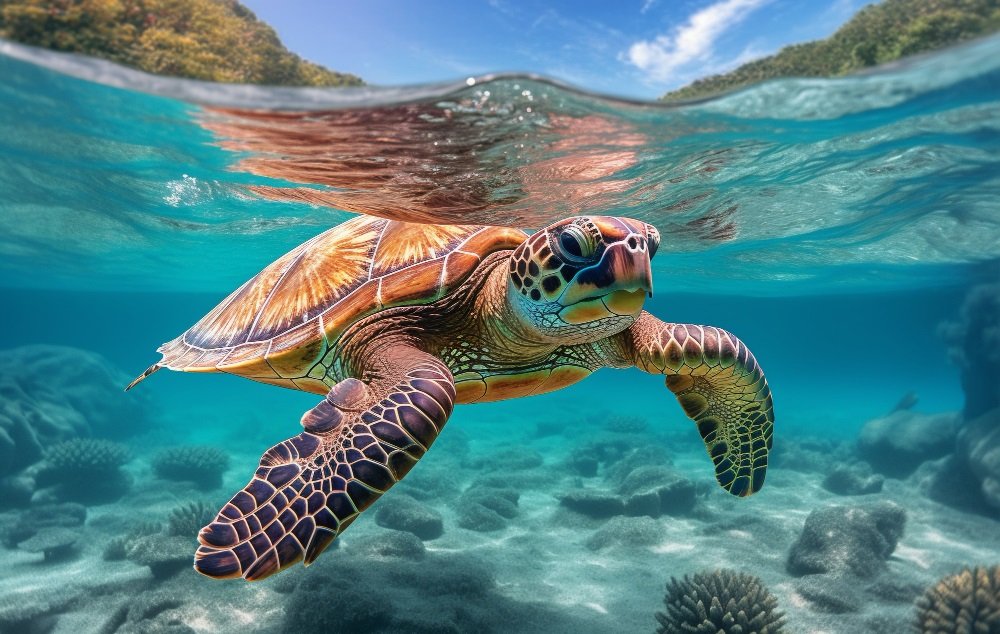Understanding the dietary habits of animals is crucial for their well-being and for maintaining healthy ecosystems. This is especially true for turtles, which play important roles in their environments as both predators and prey.
What Do Common Musk Turtles Eat?
The common musk turtle (Sternotherus odoratus) is a small aquatic turtle found in the southeastern United States. These turtles are omnivores, meaning they consume both plant and animal matter. Their diet varies depending on factors such as age, habitat, and seasonality.
A Diverse Menu
Common musk turtles are opportunistic feeders, readily consuming a wide range of food sources. Their diet typically includes:
- Insects
- Worms
- Snails
- Crayfish
- Tadpoles
- Small fish
- Algae
- Aquatic plants
Young musk turtles may rely more heavily on insects and other invertebrates, while adults often consume larger prey items and more plant matter.
What Do Common Musk Turtles Eat?
The common musk turtle (Sternotherus odoratus), also known as the stinkpot turtle, is a small, aquatic turtle native to the eastern United States. These turtles are known for their pungent musk, which they release when threatened. They are omnivorous, meaning they eat both plants and animals. Understanding their diet is essential for their proper care in captivity and for appreciating their role in the ecosystem.
Diet in the Wild
In their natural habitat, common musk turtles are opportunistic feeders, consuming a variety of food sources available to them. Their diet consists primarily of:
Aquatic Plants
- Algae
- Waterweed
- Pondweed
- Duckweed
These plants provide essential nutrients and fiber to their diet. (See Also: Do Turtles Get New Shells)
Invertebrates
- Snails
- Crayfish
- Worms
- Insect larvae
Invertebrates are a significant part of their diet, offering a good source of protein.
Small Fish and Amphibians
While not as common as other food items, musk turtles will occasionally prey on small fish and amphibians, such as tadpoles and salamanders.
Dietary Needs in Captivity
Providing a balanced and varied diet is crucial for captive musk turtles. A commercially prepared turtle pellet should form the foundation of their diet, supplemented with fresh foods. Here’s a breakdown of their dietary needs in captivity:
Commercial Turtle Pellets
High-quality turtle pellets provide a complete and balanced nutrition source, containing all the essential vitamins and minerals they require. Choose pellets specifically formulated for aquatic turtles.
Fresh Foods
In addition to pellets, offer a variety of fresh foods to enrich their diet. These can include:
- Leafy greens: Spinach, kale, romaine lettuce
- Vegetables: Carrots, zucchini, bell peppers
- Fruits: Berries, melons (in moderation)
- Invertebrates: Snails, earthworms, mealworms (gut-loaded)
- Small fish: Bloodworms, brine shrimp
Remember to wash all fresh foods thoroughly before feeding.
Frequency of Feeding
Juvenile musk turtles require more frequent feedings than adults. Generally, juveniles should be fed daily, while adults can be fed every other day or three times a week. (See Also: Why Is Turtles Endangered)
Water Quality
Maintaining clean and healthy water is essential for musk turtles. Regular water changes and filtration are necessary to prevent the buildup of waste and harmful bacteria.
Importance of a Balanced Diet
A balanced diet is crucial for the overall health and well-being of common musk turtles. It ensures they receive the necessary nutrients for:
* **Growth and Development:** Proper nutrition is essential for their growth, particularly during their juvenile stage.
* **Strong Bones and Shells:** Calcium and other minerals are vital for maintaining strong bones and shells.
* **Healthy Immune System:** A balanced diet supports a robust immune system, helping them fight off diseases.
* **Energy Levels:** Adequate nutrition provides them with the energy they need for swimming, foraging, and other activities.
Recap
Common musk turtles are omnivorous creatures with a diverse diet in the wild, consisting of aquatic plants, invertebrates, and occasionally small fish and amphibians. In captivity, a balanced diet of commercial turtle pellets supplemented with fresh foods is essential for their health and well-being. Providing a variety of food sources, ensuring clean water, and maintaining proper feeding frequency are key aspects of caring for these fascinating creatures.
Frequently Asked Questions: What Do Common Musk Turtles Eat?
What is the main diet of common musk turtles?
Common musk turtles are omnivores, meaning they eat both plants and animals. Their diet primarily consists of insects, worms, snails, small fish, tadpoles, and crustaceans.
Do common musk turtles eat fruits and vegetables?
Yes, while their diet is mainly protein-based, common musk turtles will also consume fruits and vegetables. Good options include leafy greens, berries, and melons. (See Also: How Much Do Sea Turtles Live)
How often should I feed my common musk turtle?
Young musk turtles need to be fed daily, while adults can be fed every other day. The amount you feed will depend on the size of your turtle and its activity level.
What are some safe foods to feed my common musk turtle?
Safe foods include earthworms, crickets, mealworms, small fish, snails, chopped lettuce, zucchini, and berries. Avoid feeding them processed foods, dairy products, or sugary treats.
Can I feed my common musk turtle commercial turtle food?
Yes, commercial turtle food can be a good supplement to a varied diet. Choose a high-quality food that is specifically formulated for omnivorous turtles.


